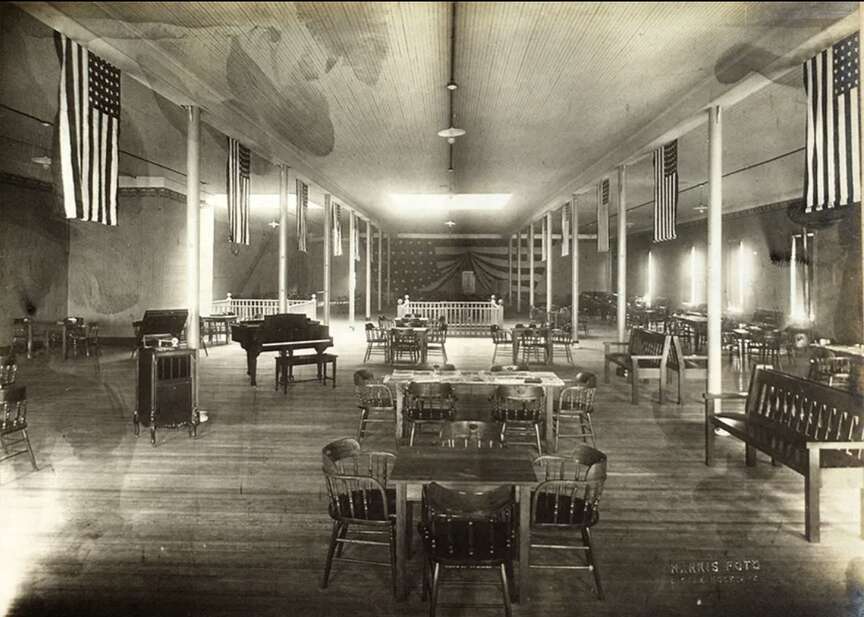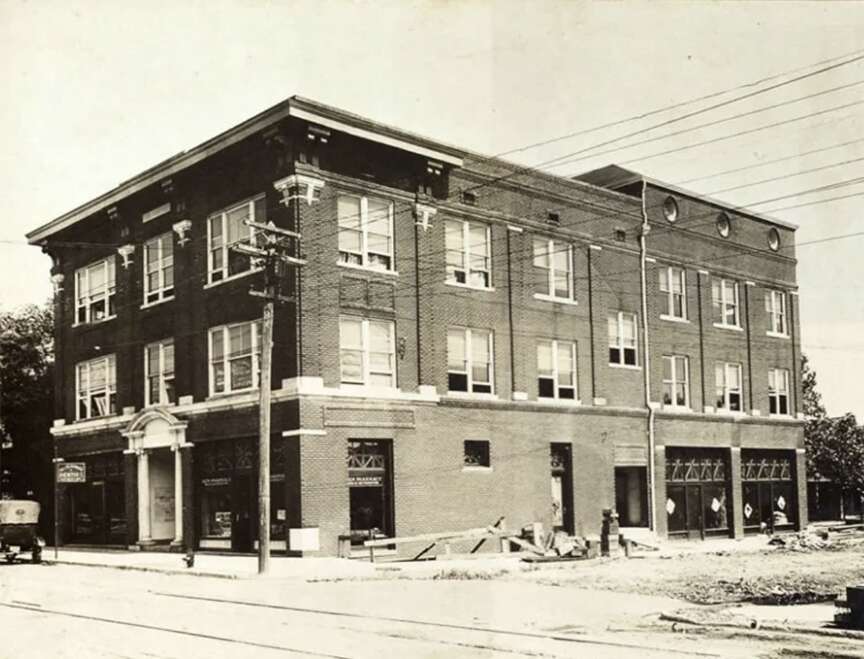ARKANSAS A-Z: Black business thrived on Little Rock’s West Ninth

West Ninth Street in Little Rock emerged as a predominately Black neighborhood during the Civil War. In 1863, occupying federal forces began constructing log cabins in the area for freed slaves. After the war, many stayed and settled there. By 1870, what was originally known as Little Rock’s West Hazel Street was renamed West Ninth Street. As the population grew, a five-block section along West Ninth Street, between Broadway and Chester, became the center of the Black business district.
The Mosaic Templars of America (MTA) was established in 1882 by Chester W. Keatts and John Edward Bush, two former slaves who later became employees of the U.S. Postal Service’s Railway Mail Service. The MTA offered life and burial insurance policies and later operated a loan association. In 1913, the MTA built its headquarters at the corner of Ninth and Broadway, and this became a center for business and entertainment in the West Ninth Street district.
As a consequence of increased segregation, West Ninth Street became known as “the Line,” the name connoting the color line separating Black and white communities. The area surrounding West Ninth Street was known by this time as the “colored section” of Little Rock and “a city within a city.”
Taborian Temple opened in 1918 at 800 West Ninth on the opposite end of “the Line” from the Mosaic Templars building. Black business owners occupied five blocks between West Broadway and Chester streets in downtown Little Rock, with a laundromat, restaurants, stenographer and notary public offices, retail shops and more. The 1920s were known as the “Golden Era” for the area’s Black community.
West Ninth Street continued to grow throughout this time, but the Great Depression of the 1930s devastated many businesses and fraternal groups. Between 1930 and 1935, 11 percent of West Ninth Street’s businesses (16 total) closed. The MTA declared bankruptcy soon after the crash. By 1935, the Mosaic State Temple building had 10 vacancies, with its entire second floor of offices completely vacant.
 Taborian Hall, circa early 20th century (Courtesy of the CALS Butler Center for Arkansas Studies, Central Arkansas Library System)
Taborian Hall, circa early 20th century (Courtesy of the CALS Butler Center for Arkansas Studies, Central Arkansas Library System)
During the 1930s, social clubs began using Taborian Temple’s spacious third floor for dances and club meetings. Clubs like the Modernistic Club and, later, Club Morocco and Twin City Club established their spots in the building and sponsored dances there. On Jan. 31, 1935, the Les Quatre Roses Club sponsored its first annual dance at Taborian’s Dreamland Ballroom. Approximately 250 guests enjoyed live music performed by the legendary jazz singer Billie Holiday. Dreamland Ballroom became known for hosting high-class and high-profile events, featuring big names in music such as Ella Fitzgerald, Dizzy Gillespie, Nat King Cole, Duke Ellington, Cab Calloway, B. B. King and a host of others. In 1941, S.W. Tucker opened a new nightclub called The Club Aristocrat, changing the name of the former Dreamland Ballroom. Meanwhile, the Morocco sponsored artists such as Sam Cooke, Etta James, Count Basie and Otis Redding.
A spirit of entrepreneurialism hit West Ninth Street with the American entry into World War II in 1941. Due to racial segregation, Black soldiers had only two options for entertainment venues close to Camp Robinson: Washington Avenue in North Little Rock and West Ninth Street in downtown Little Rock. Attractions ranged from the Gem Theater to Dean Johnson’s Café and Drive-In. Liquor, music, pool halls, nightclubs and live-entertainment events attracted soldiers and students, as well as the aristocrats of the Black community.
West Ninth boomed during the 1940s and 1950s. However, despite (or due to) the many flourishing businesses along West Ninth Street, this Little Rock community faced demolition and clearance as part of the national Urban Renewal project. Urban renewal came by way of the Federal Housing Act of 1949, which aimed to modernize “blighted” areas within cities. The Little Rock Housing Authority (LRHA) told owners to sell at the appraised price or expect further action, including eviction by court order.
B. Finley Vinson, former director of the LRHA and its slum clearance and urban redevelopment project at the time, later stated that “the city of Little Rock through its various agencies including the housing authority, systematically worked to continue segregation.” For those who refused to sell, the LRHA then began evicting residents and business owners from downtown, after which West Ninth Street’s businesses rapidly declined, with most closing by the mid-1960s. The construction of Interstate 630 beginning in the 1960s, just south of West Ninth, served to exacerbate racial and economic divides.
The only surviving structure from the heyday of the neighborhood is Taborian Hall, which was listed on the National Register of Historic Places in 1982. In 1991, Arkansas Flag and Banner purchased the building, and business owner Kerry McCoy began working to renovate Dreamland Ballroom. — Shanika J. Smith
This story is adapted by Guy Lancaster from the online Encyclopedia of Arkansas, a project of the Central Arkansas Library System. Visit the site at encyclopediaofarkansas.net.
https://wehco.media.clients.ellingtoncms.com/imports/adg/photos/208525365_IMG_6862_t1200.jpg?57a0c2296240c280e9492005c3cad63e7cbe80f4
2024-12-14 14:00:00






